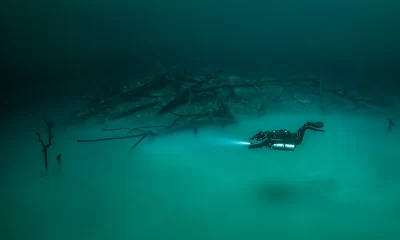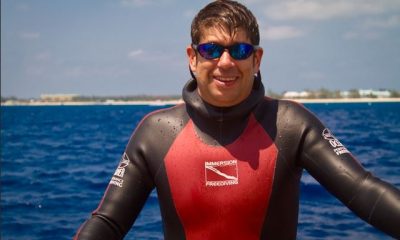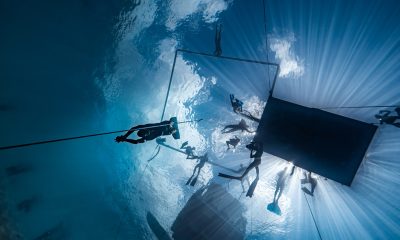Education
Don’t Hold Your Breath: The Movement to Ban Breath-holding in Pools
There’s a movement afoot to ban breath-holding in pools in an effort to prevent hypoxic fatalities—Sorry, no freediving or scuba training for you! Unfortunately, as dive educator Tec Clark reports, they’re throwing the breath-holder out with the pool water. Wouldn’t the water tribe be better served if aquatic directors followed the education model of scuba and swimming and properly trained and educated people to manage the risks versus banning the activity outright? Tec’s got the deets.
By Tec Clark . IG: @tecclark.

I became the National Director of the YMCA Scuba Program in the summer of 1998, where, while at the USA YMCA headquarters in Chicago, my attendance was requested at an urgent meeting with the top legal counsel of the Y. Once there, I was asked, “Can you tell us what freediving is?”
With enthusiasm, I described the sport in detail since I was a freediving judge and co-founder of the U.S. Freediving Team. After my passionate pitch the attorney said, “Well, we just had a fatality at a Y. A member told the lifeguard to ‘leave him alone’ while he practiced freediving. The guards pulled him up after a long time underwater and could not resuscitate him.” I interjected and told our legal counsel that the deceased had violated some major safety rules of freediving and that is why we were going to promote a nationwide safety campaign for freediving in YMCA pools, she immediately said, “No. I want to ensure freediving does not take place in any YMCA. We need to condemn and disallow this activity.”
Similar conversations have taken place by aquatic directors, attorneys, and insurance managers in dozens of municipal, not-for-profit and private aquatic facilities nationwide. And, instead of fixing the problem with education and proper safety protocols, a much simpler approach has taken place, and that is to ban breath hold diving in aquatic facilities.
“No breath holding” policies are now seen in almost every aquatic facility and on pool rules signs throughout the U.S., which means that many aquatic facilities are completely shutting down freediving training. There are numerous reports of freediving instructors being turned away by aquatic directors who disallow freediving in their pools—even under supervision and with instruction by qualified instructors.
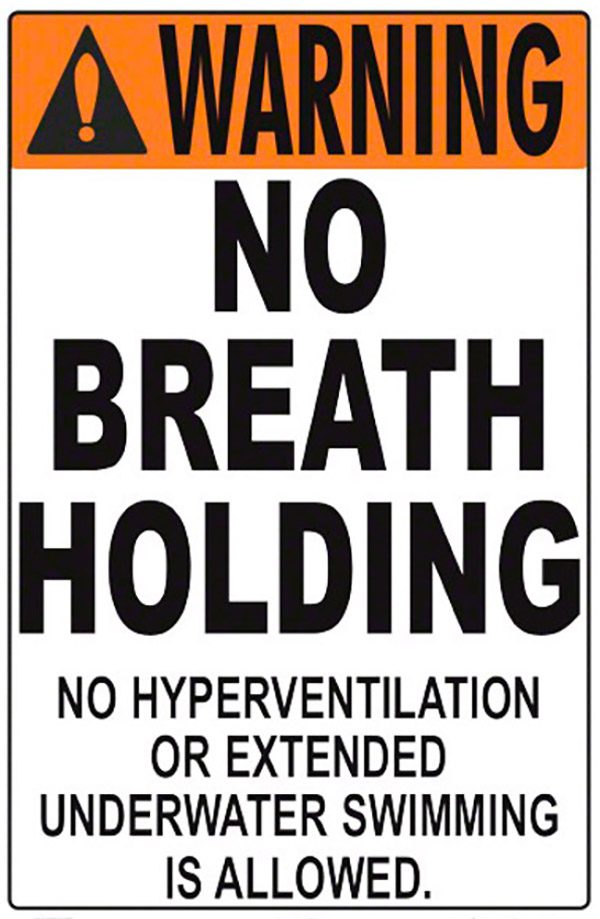
Meanwhile, freediving is becoming more popular, and more and more dive centers are offering freediver training. When a dive center that teaches scuba classes at a pool now wants to teach freediving classes, they are being told they cannot. When questioned, most aquatic directors point to their pool rules of “no extended underwater swimming” or “no breath holding allowed”. Interestingly, it is true that during an Open Water Diver course there is a skin diving component in which people hold their breath and swim underwater. And some scuba training agencies require an underwater swim during the prerequisite swim test. Also happening are underwater breath hold swims for American Red Cross Lifeguard tests. In addition to these activities, would synchronized swimmers also fall into the breath holding activity category?
In fact, as Tom Griffiths with the Aquatic Safety Group says, “Whatever we do in aquatics requires breath holding at some point.” He’s right, for even when we go swimming we are breathing in between strokes. That means we are breath holding at varying intervals. And, don’t get me started on swim lessons.
If there are such strict rules against breath holding, then why are the American Red Cross and YMCA swim lesson programs teaching kids how to hold their breath? Of course, we answer this rhetorical question with, “because it is how we get along in the water—sometimes we breathe and sometimes we hold our breath.”
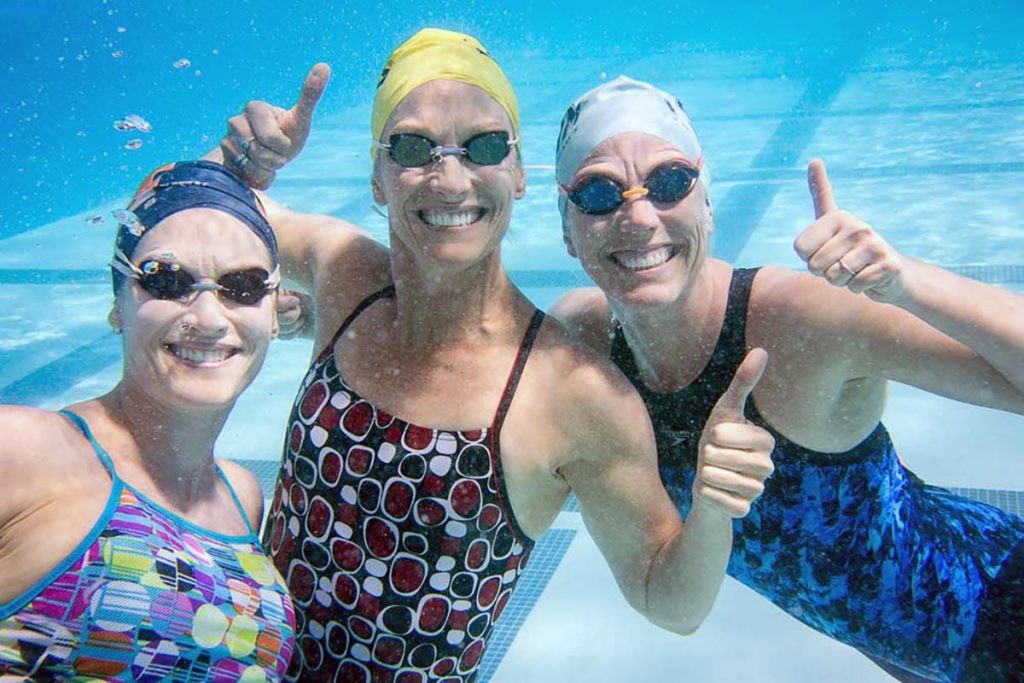
The Incident Data
Some will argue that I’m taking it to the extreme and that what is really being prevented with these policies are “prolonged” or “extended” times of breath holding underwater. This could be in the form of distance underwater, time underwater, or both. This is because of the shocking number of fatalities that have taken place in pools with people engaged in pushing those two limits while holding their breath underwater. Dozens of drownings and non-fatal drownings take place each year with these actions either individually, as a person tries to break their own records, or in a group setting, as individuals compete with others to see who can hold their breath longer and/or go farther on one breath of air.
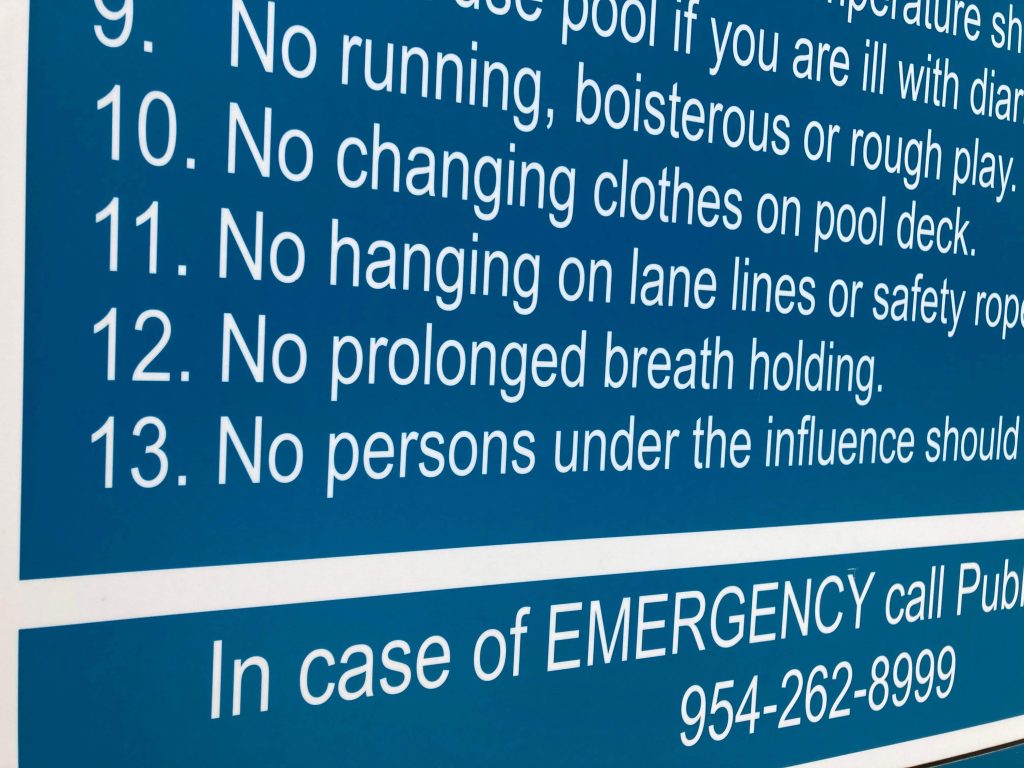
The root malady causing harm is termed shallow water blackout, but it is more accurately named hypoxic blackout. This is when unconsciousness results from hypoxia (low oxygen) to the brain. Our bodies’ cue to breathe comes primarily from rising CO2 levels. As CO2 levels increase, so does the urge to breathe. However, if an individual pushes through the urge to breathe and/or hyperventilates prior to a breath hold dive, then hypoxic blackout can occur easily. Once a blackout takes place and the respiratory tracts are submerged, the chances are high that water will enter the lungs at some point and the person will drown. If the victim survives, then the condition is non-fatal drowning—the old term for this was near drowning.
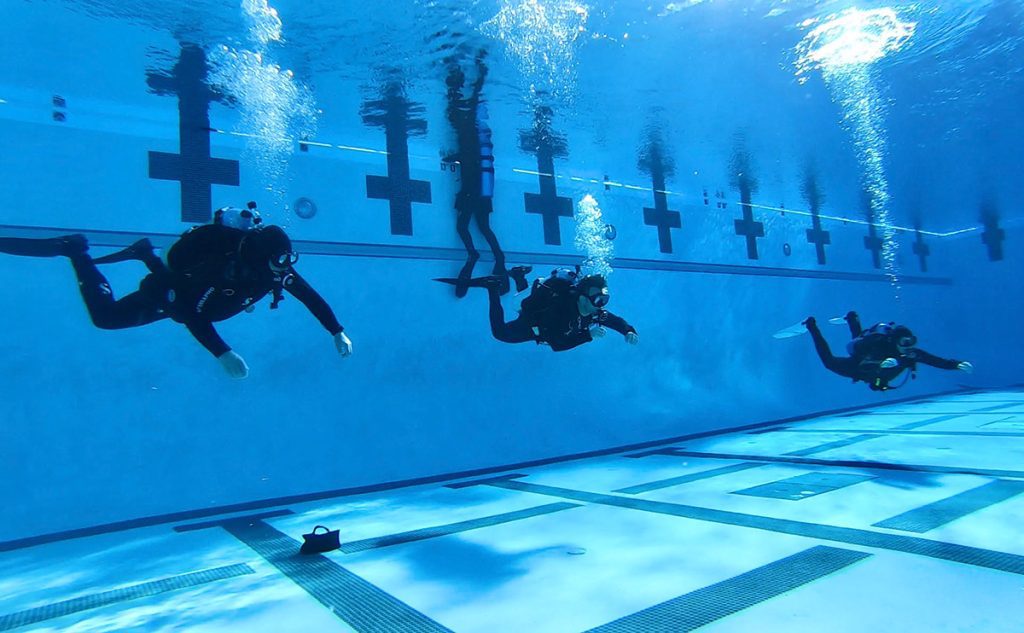
Since 2004, Divers Alert Network, DAN, has collected and analyzed breath-hold incidents. Between 2004 and 2017, 995 incidents were reported with 73% being fatal. However, the DAN reports often do not capture swimming related blackout events such as with swim teams. The swimming community is becoming increasingly aware of the dangers of shallow water blackout (hypoxic blackout). Olympic gold medalist Michael Phelps recently recorded a PSA with his coach Bob Bowman to warn swimmers and athletes about the dangers of shallow water blackouts. This video is located on SHALLOWWATERBLACKOUTPREVENTION.ORG—a website dedicated to hypoxic blackout prevention.
Preventing hypoxic blackouts is precisely the reason for aquatic facilities’ restrictions of breath holding, which is also the proverbial throwing away the baby with the bathwater. In scuba diving we have risks. and we use technology and techniques to mitigate those risks. Technology is our gear to stay underwater safely and our techniques are our skills and standards brought about through education. But there is still risk. The only way to eliminate all risk is to not scuba dive. Since that is not an option, we educate.
The same holds true in aquatics. Swimming has risks, and there are plenty of programs to teach people how to swim. Yet, even when people have their skills and education, there is still risk. The only way to completely eliminate the risks of drowning or non-fatal drowning is to not swim at all. That, too, is not an option.
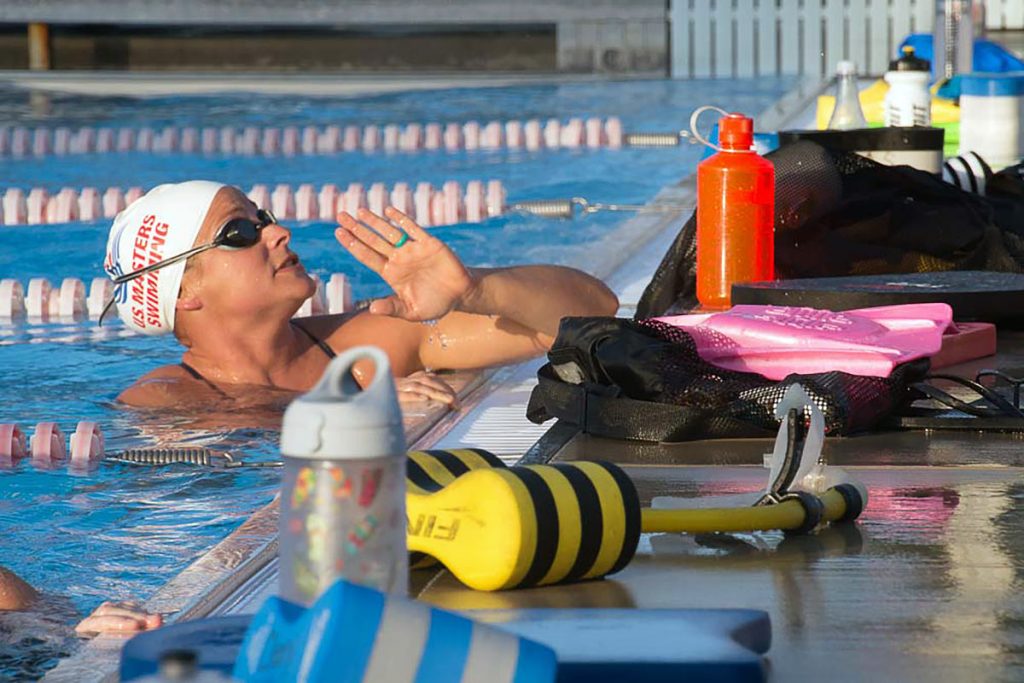
But here with freediving, the risk is being eliminated by shutting down the activity completely. Wait a minute, what happened to the education model as seen in scuba diving and swimming lessons? Wouldn’t it be better to properly train and educate people on the risks than to completely prevent the activity? The answer is a resounding yes!
“What happened to the education model as seen in scuba diving and swimming lessons? Wouldn’t it be better to properly train and educate people on the risks than to completely prevent the activity? The answer is a resounding yes!”
College-aged males are the number one demographic of fatalities due to extended breath holding events. This includes trying to push their own limits in a pool or freediving in an open body of water. And the overwhelming majority of these men were never trained in proper breath-holding methods and protocols as offered in a formal freediving course.
Could the aquatics industry be exacerbating this phenomenon by shutting down the ability to teach proper breath-hold-diving safety techniques as taught in supervised freediving courses vetted by diving training agencies? I believe so.

What’s To be Done?
If you look at SHALLOW WATER BLACKOUT PREVENTION.ORG, one of their stated goals is, “To ban prolonged breath-holding in pools for the general public.*” However, note the asterisk. Here is the associated footnote that accompanies this statement: “We believe qualified breath-hold freedive training agencies need access to public pools during non-general public usage with lifeguards on duty. Using the buddy system, proper supervision, and training protocols with continuous monitoring, along with waivers by participants to protect the facility and staff, freediving may be practiced safely.”
As a Performance Freediving International (PFI) Freediver Instructor, I teach people how to breath-hold dive responsibly. Not only are there multiple courses for multiple levels of proficiency but, in these courses, about 70% of the education and skills developed are dedicated to safety principles. These safety principles are practiced over and over, drilled into the minds and motor memory so that individuals who walk away from the course with their freediving certification would be extremely unlikely to break the safety protocols taught in the course.
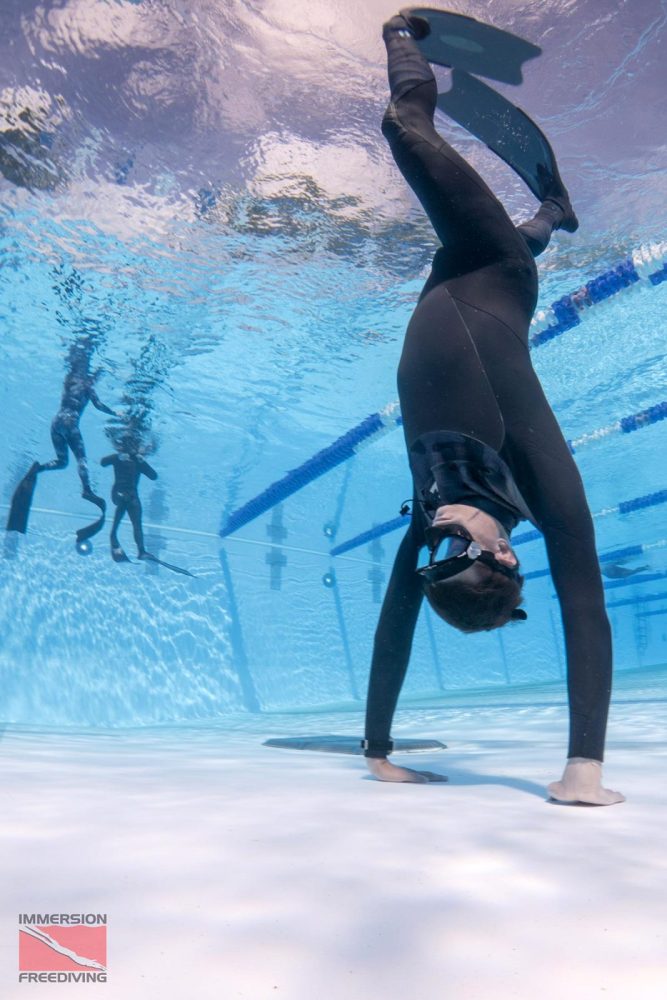
Scuba training agencies are reporting that freediving is the fastest rising certifications in the industry. Just over twenty years ago freediving was such a specialty niche that only one agency, PFI, was in place. Today, most scuba training agencies have freediving courses and issue freediving certifications.
With this rise in popularity of freediving, there is a problem. If aquatic facilities shut freediving down entirely, these interested parties are going to do it somewhere—untrained, unsupervised, and by violating numerous safety protocols. They are in danger of becoming an unfortunate and preventable statistic. Primarily because they were not allowed to learn correctly in the first place. It is extremely important for aquatic directors to embrace freediving training at their facilities with as much care as they would swimming lessons so that freedive training is a public safety initiative rather than a “dangerous program.”
As diving professionals, we have the ability to help educate aquatic directors and managers as to why they should allow proper freediving training and proper freediving practices to take place at their facilities. It all boils down to supervision and standards. First, as noted by SHALLOW WATER BLACKOUT PREVENTION.ORG qualified freediving instructors need access to public pools. Freediving training teaches the proper supervision, safety and training protocols of breath hold diving. This can help save lives.
Breath Hold Safety
Freediving or breath holding in an aquatic facility can take place properly under specific guidelines. For an aquatic facility to open up breath holding to its patrons, here are some sample guidelines to put in place with patrons:
|
Dive Deeper
InDEPTH: The Causes, Physiology, and Process of Drowning by Andrea Zaferes
MICHAEL PHELPS AND BOB BOWMAN HOST SHALLOW WATER BLACKOUT PREVENTION PSA
YouTube: Shallow Water Blackout PSA Featuring Bob Bowman
The Today Show: Boys Save Dad With Sandlot CPR
People: Coach Rescues Swimmer After Athlete Faints in Pool During World Championships
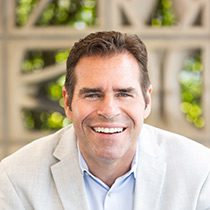
Tec Clark is a diving industry expert who has held elite positions in the dive industry including Managing Director of the University of Florida’s Academic Diving Program and National Director of the YMCA Scuba Program. He holds over 40 professional certifications with over 15 diving agencies. Tec has also been a police officer, dive rescue team member, and forensic dive accident investigator. He also appeared as a diving expert on A&E, The Learning Channel, and Outdoor Life Network. Tec was Captain of the US Freediving Team, founder of Reef Ministries, and curates ScubaGuru.com and ScubaGuru Academy. He is also the host of two podcasts: The League of Extraordinary Divers and The Dive Locker. Tec is the Associate Director for Aquatics and Scuba Diving at Nova Southeastern University in Fort Lauderdale, Florida. You can find them on Instagram at:@tecclark





















